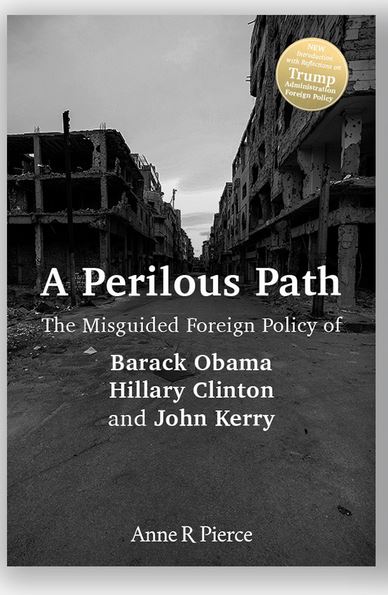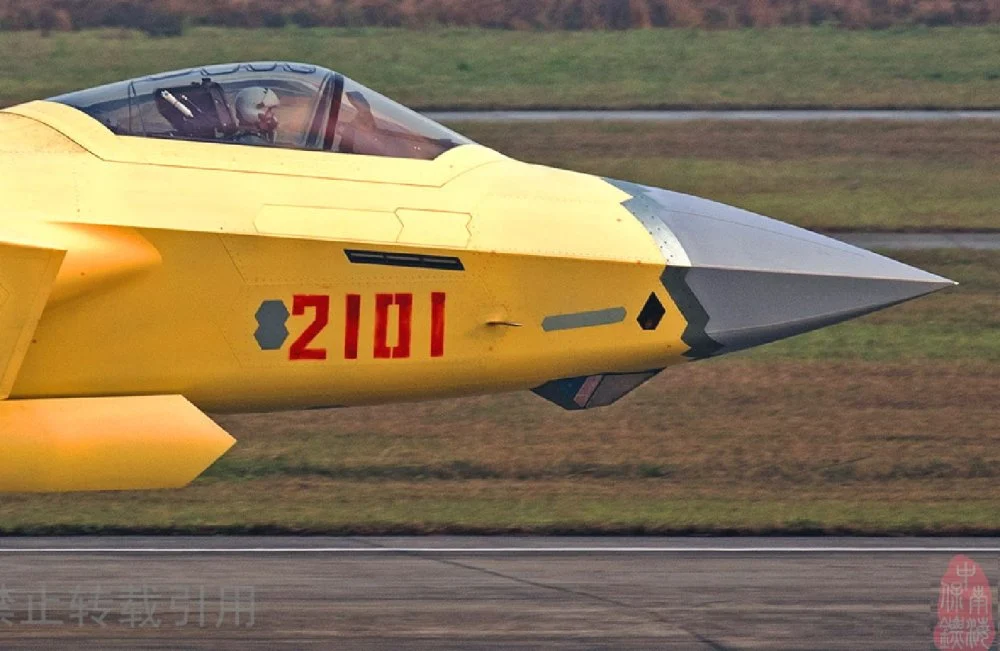Image Credit: Chinese Military.
It’s time to move beyond the question of whether the United States is, or should be, in a cold war with China, for China’s cold war with the United States is well underway.
In fact, China’s multi-pronged “struggle” against America and the Free World has hot war dimensions. In the varied research areas of human rights and international institutions, cyber and information domains, military strategy, and global economics, analysts use words in common to describe China’s behavior. In collectively pointing to China’s coercion, aggression, deception, violations, threats, and attacks, they portray the Chinese Communist Party’s (CCP) domestic, regional, and global policies as definitively hostile.
China today is expansionist, fiercely anti-democratic, and determined to subvert the post-World War II, U.S.-oriented world order. Toward that end, it is deploying every grey-zone tool conceivable while building a massive military arsenal, honing war plans, and mobilizing forces to seize Taiwan. A drive for internal and external predominance that eschews accommodation is manifest everywhere: in omnipresent domestic repression and terrible atrocities against “minorities”; in the exploitation, intimidation and control that accompanies the CCP’s expansive military and economic footprint; in the worldwide exportation of authoritarianism, surveillance, and propaganda; in bellicosity and territorial and maritime encroachments against neighbors; and in the China-Russia-Iran-North Korea axis which aggressively challenges the West and backs other dictators and extremists.
The United States has no choice but to quickly regain a secure lead in hard and soft power. U.S. foreign policy must fire on all cylinders, and that includes, along with allies, containing China’s military, confronting China’s sabotage and espionage, and challenging China’s ideology. In other words, the United States must engage in a cold war that pulls from the previous Cold War the best practices for success.
The United States is more likely to be forced into a horrific war over Taiwan, or to choose temporary peace with China at the expense of Taiwan, if it stays the current course. (If past is prologue, policymakers might vehemently “object” to a Chinese incursion while failing to defend Taiwan.) The U.S. and allied deterrent posture and level of resolve relative to China’s shows the urgent need for bolstering defenses, rebuilding the U.S. defense-industrial base, and mounting a credible threat of overwhelming force. Given Western tendencies toward prevarication, incrementalism, and risk avoidance (all too evident in the response to Russia’s war on Ukraine and the failure to stop Russia’s full-scale invasion in the first place), the Free World must demonstrate the will and the means to preempt a Taiwan invasion, but to fight for Taiwan if truly necessary.
China’s subjugation of Taiwan would, in the words of Center for Strategic and International Studies scholar Jude Blanchette, turn that vibrant, prosperous democratic country into a “penal colony, a police state.” The knock-on damage to America’s allies in the region, and to America’s credibility and reputation, would be devastating.
Yet, even short of full-scale war on Taiwan, China poses a dire threat to the Free World’s very security and way of life. Lest there’s doubt of the merciless, dystopian reality a CCP world order would bring, there’s the fact that China is the chief sponsor and enabler of North Korea, a country where repression is so omnipresent and severe that the country itself could be said to be a “camp,” and that routinely engages in nuclear brinkmanship. There’s the fact that China has forced Uyghurs into camps and prisons where sadistic torture and total control and surveillance prevail, and ethnic minorities and rural workers into forced labor. There’s the attempt to erase Uyghur and Tibetan identities and the abduction of Uyghur and Tibetan children into “boarding schools” for “re-education.” There is China’s alignment with Russia’s genocidal war on Ukraine and with Iran’s brutal domestic crackdown and terror sponsorship.
Since this is the China we’re dealing with, it behooves us to face up to ways China is, already, engaged in a Cold War with hot war characteristics.
Starting with the obvious, there is China’s drive to replace the United States as the world’s dominant military power, dominance that can ensure imperial gains and compromise democracies’ decisions. The gargantuan scale and pace of China’s military build-up clearly suggest offensive as well as defensive purposes. Pentagon officials report that China’s overall military might is on a trajectory to surpass the United States and that China has the world’s largest Navy. Modern Chinese Maritime Forces found that “In terms of ship numbers, each of China’s three sea forces is the world’s largest by a large margin.” Making matters worse, the Office of Naval Intelligence says that China has over 200 times the ship and submarine building capacity of the United States. Moreover, the Department of Defense (DOD) warns the PLA Air Force “is rapidly catching up to western air forces.” No wonder Navy Admiral Philip Davidson told the Senate Armed Service Committee that “the military balance … is becoming more unfavorable to the United States and our allies.”
Expansive partnerships between Russia, China, and Iran enhance the power of all three and challenge U.S. security and influence. The three countries benefit from energy trade, weapons and technology transfers, joint military exercises, breaches of sanctions, and (sometimes coordinated) anti-American disinformation. Testimony to the lethal potential of Russia and China combined, the RAND Corporation reported last year that U.S. forces were defeated by Russian and Chinese forces in European and Asian hot spots in simulated war games. Russia and China are producing space weapons to attack U.S. satellites and evade U.S. missile defense systems, and Russia is providing highly enriched uranium for China’s nuclear program. Add to this China’s cyber and bio-weapons capabilities, and dramatic ramp-up of nuclear weapons and intercontinental and submarine ballistic missile production, and the picture gets more alarming. In the words of Assistant Secretary of Defense for Space Policy John Plumb, China “has an ever-growing inventory of sophisticated long-range strike systems putting US forces at risk at greater and greater distances.”
The DOD’s 2023 China Military Power Report not only confirms all this but says China’s nuclear build-up is “exceeding previous projections” and that China appears to be building a new intercontinental missile system that would enable it “to threaten conventional strikes” against the continental United States, as well as Hawaii and Alaska. Another chilling finding is that China is focused on “dominating artificial intelligence for warfare.” Notably, the report also highlights “China’s increasing military coercion.” This is seen in multiple “unsafe intercepts” of U.S., allied, and partnerships and planes operating in international air and seaways in the Indo-Pacific, in “intensifying military, diplomatic and economic pressure” on regional neighbors; and in ballistic missile overflights of Taiwan, warplane incursions into its air defense identification zone, and encirclement of the country with ships and drones. In August 2022, China mounted a “large-scale simulated joint blockade and simulated joint firepower strike operation” around Taiwan and fired ballistic missiles into Japan’s exclusive economic zone.
The strain China’s militarism and imperialism place on U.S. allies Japan and South Korea cannot be ignored. China uses both military and economic might to apply pressure. As examples: China’s maritime militias, coast guard, and navy routinely traverse Japan’s Senkaku Islands. South Korea decided to forbid domestic companies from working on Taiwan’s military submarine program due to the “risk of Chinese economic retaliation.” Given the combined nuclear and missile threats of North Korea and China, and China’s “no limits partnership” with nuclear-power Russia, Japan’s defense minister calls the security environment “severe.” It doesn’t help that China often cancels bilateral defense engagements, and has denied the DOD’s multiple requests for military-to-military communication.
China preposterously claims most of the South China Sea as its own, with a map based on “ancient navigation” that international law and common sense show has no validity. Thus, in addition to “island building” and construction of military bases and outposts in the South China Sea and beyond, China intimidates and harasses Southeast Asian countries. China’s illegal fishing, which devastates food supplies and livelihoods is common not just in the South China Sea, but as far east as Hawaii. And China has dramatically and provocatively expanded its naval-maritime presence in the Indian Ocean. Chinese ships have multiple times blocked and collided with Philippine vessels off Second Thomas Shoal, and have repeatedly entered Vietnam’s and other countries’ exclusive economic waters. In yet another high-risk maneuver in the region, a Chinese fighter jet came within 10 feet of an American B-52 bomber on October 24.
But we mustn’t fool ourselves. China’s aggression and hostility toward the Free World is global, not just regional, and takes many forms. Never mind Xi Jinping’s doublespeak for susceptible democratic ears to the contrary, Xi wants Communist China to defeat and replace the United States as the world’s superpower; the CCP’s every move proves it doesn’t want a “multilateral” world that respects “sovereignty” and avoids “meddling in internal affairs.” Xi believes China’s national-historical and international-communist destiny is to rule the world.
China’s tremendous success in making Western countries dependent on Chinese goods and supply chains and its major commercial agreements and loans on every continent have greatly augmented China’s power. Moreover, China has benefited from decades of highly aggressive espionage, corporate, political, and academic infiltration, and intellectual property theft, especially in the United States. China altered American, European, and Latin American universities via Confucius Institutes, sinology programs, and joint scientific research which advanced China’s ideological and military-strategic priorities. The CCP has worked assiduously to steer media narratives and compromise academic, business, and policy elites.


